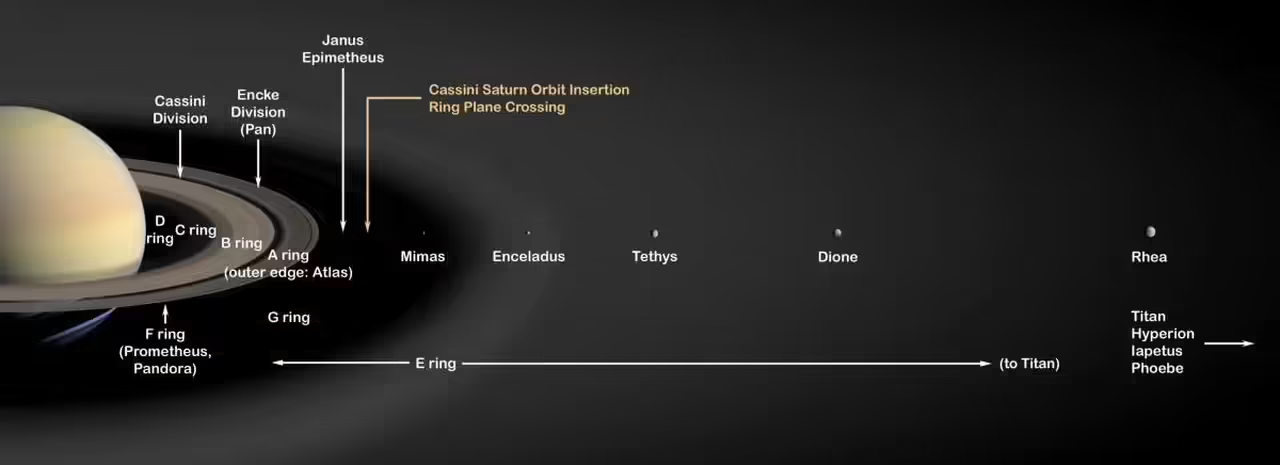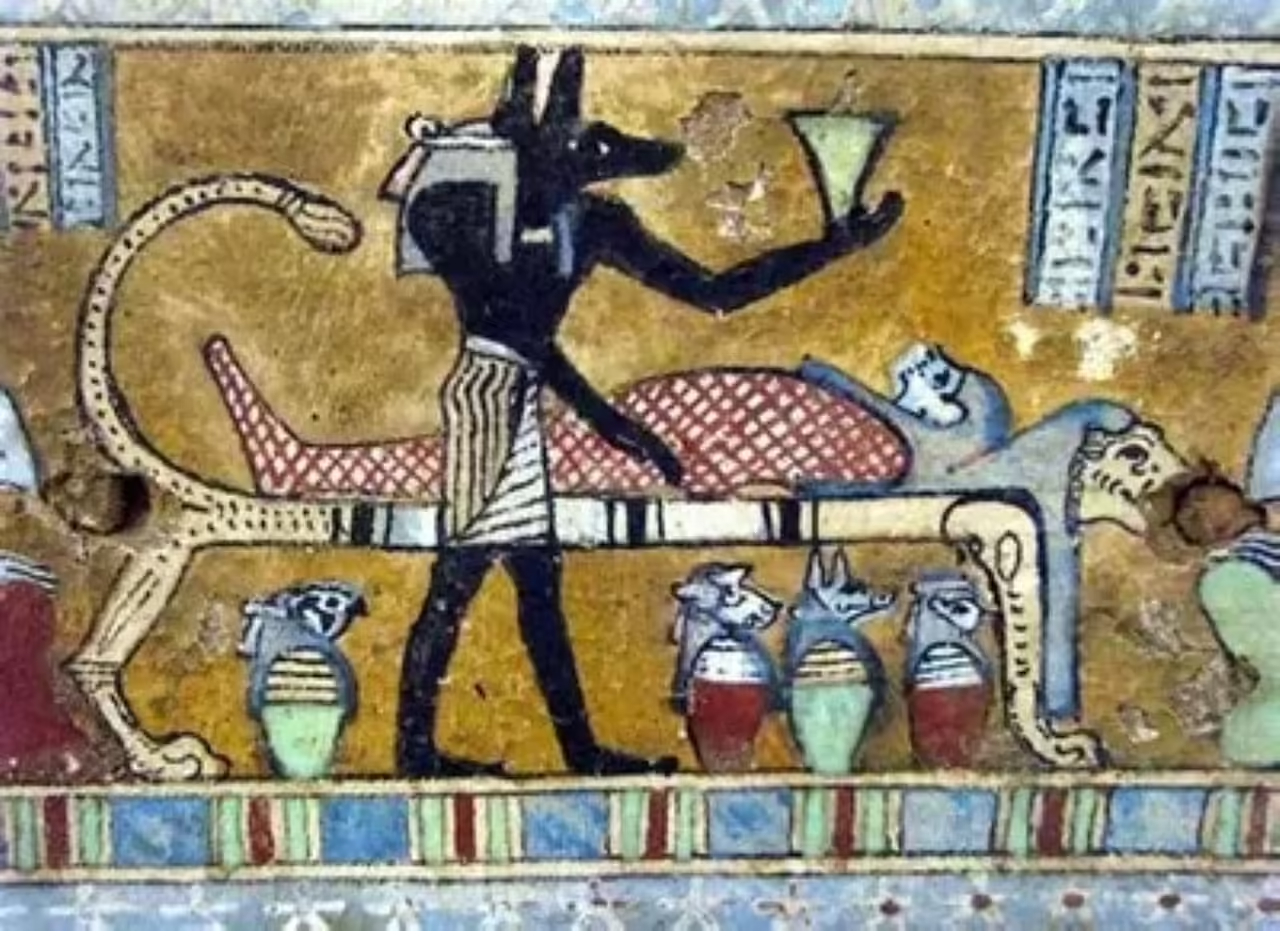
Saturn’s ring system has fascinated astronomers and space enthusiasts for centuries. These vast structures in orbit around the gas giant have been the subject of intense study and speculation. While conventional theory holds that the rings formed from materials that orbited Saturn in its early stages, a bold hypothesis has recently emerged: is it possible that Saturn’s rings have a connection to dinosaurs that roamed the Earth millions of years ago?
In this article, we will explore this intriguing theory and examine the basis on which it is supported. It is important to note that this idea challenges established scientific explanations and is subject to intense debate in the scientific community. However, its creative and provocative approach deserves proper attention in order to understand its scope and limitations.
Saturn’s Rings: A Fascinating Cosmic Mystery
Before delving into the proposed connection between Saturn’s rings and dinosaurs, it is essential to understand the nature and stunning beauty of these rings. First discovered by Galileo Galilei in 1610, Saturn’s rings have puzzled astronomers for centuries. They are gigantic structures composed mostly of ice particles, rocks and dust, orbiting the planet at a considerable distance.
The rings are divided into several bands, from the dense A ring to the outermost, faint F ring. Each band has a unique structure and harbors a wealth of information about Saturn’s history and evolution. Scientists have long theorized about the origins of these rings and have proposed a variety of explanations, from the fragmentation of a moon to the capture of cometary material.
Dinosaurs on Earth: A Glimpse into the Past
To understand the proposed connection between dinosaurs and Saturn’s rings, we must take a look at our own planet’s past. Dinosaurs dominated the Earth for approximately 160 million years, until their extinction about 65 million years ago. These fascinating and diverse creatures populated every continent, from giant sauropods to swift and ferocious tyrannosaurs.
Paleontologists have painstakingly studied the fossils and footprints left by dinosaurs to understand their anatomy, behavior and how they adapted to their environment. However, the connection to Saturn’s rings poses an entirely new perspective and challenges our current understanding of the history of life on Earth.
The connection hypothesis
The proposed theory suggests that, during the age of the dinosaurs, catastrophic events on Earth, such as asteroid impacts and massive volcanism, could have ejected a significant amount of material into space. According to this hypothesis, some of that ejected material would have reached orbits around Saturn, thus forming the rings we observe today.
The connection between dinosaurs and Saturn’s rings is based on the presence of certain elements and chemical compounds found both in the rings and in dinosaur fossils. Scientists have identified traces of elements such as iridium and osmium in Saturn’s rings, which are also found in abundance in the terrestrial geologic record associated with the dinosaur era.
It is speculated that these elements could have been transported to Saturn through catastrophic events on Earth, such as the impact of a massive asteroid. The collision of a space object with Earth would have released a large amount of energy and materials into space, including these characteristic elements. Subsequently, these materials would have been captured by Saturn’s gravity, forming the rings we see today.
It is important to note that this hypothesis is in the early stages of research and is the subject of intense scientific debate. Many scientists question the feasibility and plausibility of this proposed connection, arguing that solid and rigorous evidence is required to support it.
The theory of the connection between dinosaurs and Saturn’s rings poses significant challenges. One of the most important challenges is obtaining direct evidence to support this hypothesis. Space exploration, coupled with advances in paleontological research, could provide stronger data to evaluate this connection.
Further study of the composition of Saturn’s rings and detailed analysis of fossil and terrestrial geologic records are required to identify clearer similarities and correlations. Computational simulations and astrophysical models could also play a crucial role in assessing the plausibility of this connection.
A trip back in time: What were dinosaurs like on Earth?
Dinosaurs were a diverse grouping of terrestrial reptiles that spanned a wide range of sizes, shapes, and habits. Some dinosaurs were huge, such as the iconic Tyrannosaurus Rex, which reached a length of more than 12 meters and had a jaw full of sharp teeth. Others were much smaller, such as Compsognathus, which was barely larger than a chicken.
In addition to their size, dinosaurs exhibited a variety of physical characteristics. Some had bony ridges on their heads, such as Parasaurolophus, while others had bony plates covering their bodies, such as Stegosaurus. Their diversity also extended to locomotion patterns, from quadrupedal giants like Diplodocus, which moved on four legs, to agile bipeds like Velociraptor, which ran on two hind legs.
The world of dinosaurs
To fully understand what dinosaurs were like, it is essential to know the environment in which they lived. During the age of the dinosaurs, the Earth underwent significant changes in its geography and climate. The continents were grouped into a single land mass called Pangaea, and dinosaurs were distributed throughout the world.
Dinosaurs inhabited diverse environments, from lush tropical rainforests to vast plains and sea coasts. Some were predatory carnivores, while others were plant-eating herbivores. This diversity of habitats and diets contributed to the adaptation and evolution of dinosaurs over time.
Fossil Evidence and the Study of Dinosaurs
Much of our knowledge about dinosaurs is based on fossil evidence that has been discovered around the world. Fossils, which include preserved bones, footprints, eggs, and tissues, have provided valuable clues about dinosaur anatomy and behavior.
Paleontologists have used careful excavation techniques and dating methods to uncover and analyze dinosaur fossils. These findings have revealed surprising details about the dinosaurs’ bone structure, gait, respiratory system, and reproduction. Fossils of stomach contents have also been discovered that reveal information about the diet of some dinosaurs.
In addition to fossils, advances in technology have allowed the study of tissues preserved in fossils, such as feathers. This has led to the understanding that some dinosaurs had feathers and presented similar characteristics to modern birds.
The reconstruction of dinosaurs
From fossils and available evidence, scientists have been able to reconstruct approximate representations of what dinosaurs looked like in life. Through paleoart, a discipline that combines science and art, illustrators have visually recreated these ancient reptiles in their natural environment. These representations allow us to imagine how dinosaurs moved, interacted and behaved.
It is important to keep in mind that our understanding of dinosaurs is constantly evolving as new discoveries are made and scientific interpretations are refined. Current reconstructions of dinosaurs are based on the best available information, but there may still be uncertainties and areas of debate.
Dinosaur influence on the solar system: A plausible link?
One of the plausible links between dinosaurs and the solar system is through the catastrophic event that led to their extinction approximately 65 million years ago: the impact of a massive asteroid or comet on Earth. It has been proposed that this event, known as the Cretaceous-Paleogene impact event, had a significant impact on life on Earth, including the disappearance of the dinosaurs.
The impact of a large celestial body would generate an enormous amount of energy and could have launched vast amounts of material into space. This material, composed of rocks, dust, and other elements, could have been dispersed throughout the solar system, potentially reaching other planets and moons.
Material transfer: A possible influence
The transfer of material between different celestial bodies is a well-known phenomenon. For example, meteorites from the Moon and Mars have been found to have reached Earth. This transfer of material could also have occurred in the case of the impact event that extinguished the dinosaurs.
If the debris ejected by the impact reached a sufficiently high velocity, it could have escaped Earth’s gravity and been captured by the gravity of other celestial bodies in the solar system. This would open up the possibility that fragments of Earth, including dinosaur remains and other organisms, could have reached other places, such as the Moon or even planets like Mars.
Exploration in search of clues
So far, no definitive evidence of dinosaur remains or terrestrial material has been found on other celestial bodies. However, this does not rule out the possibility of a connection between dinosaurs and the solar system. Space exploration continues to provide us with new opportunities to search for and analyze samples from other planets and moons, which could reveal hidden clues about this possible influence.
The influence of catastrophic events on Earth: Were there any catastrophes related to Saturn’s rings?
Saturn’s rings consist of a series of concentric bands composed mainly of ice particles, dust and rocks in orbit around the planet. These rings are a remarkable phenomenon in our solar system and have fascinated scientists and skywatchers for centuries.
Earth has experienced a series of catastrophic events throughout its history, some of which have left a lasting imprint on the planet. One of the most notable events is the asteroid impact that is believed to have caused the mass extinction of the dinosaurs approximately 65 million years ago. This event triggered a series of environmental changes and mass extinctions on Earth.
As for the relationship between catastrophic events on Earth and Saturn’s rings, no direct connection has been established. Saturn’s rings were formed from ice particles and rocks in orbit around the planet, but their origin and evolution are not fully understood. The prevailing theory suggests that Saturn’s rings are the result of the disintegration of icy moons or material that never formed moons due to gravitational forces.
While there is no direct evidence linking a specific catastrophic event on Earth to the formation of Saturn’s rings, it is important to note that the solar system is an interconnected system in which events on one celestial body can have effects on others. Catastrophic events on Earth may have ejected material into space, including particles that could have been captured by Saturn’s gravity and contributed to the formation of the rings over millions of years.
Future prospects and space exploration
Space exploration continues to provide new insights and data about Saturn’s rings and other celestial bodies. Missions such as the Cassini-Huygens probe have revealed invaluable information about the composition and structure of Saturn’s rings. In addition, future space exploration and planned missions, such as NASA’s Dragonfly mission, which aims to explore Saturn’s moon Titan, could provide new insights into the connection between catastrophic events on Earth and bodies in the Saturnian system.
While we cannot currently state with certainty a direct link between catastrophic events on Earth and the formation of Saturn’s rings, space exploration and scientific research continue to shed light on the mysteries of our solar system. With each new mission and discovery, we are closer to fully understanding cosmic enigmas and possible connections between events on Earth and phenomena occurring on other celestial bodies.







